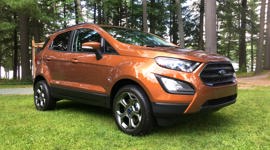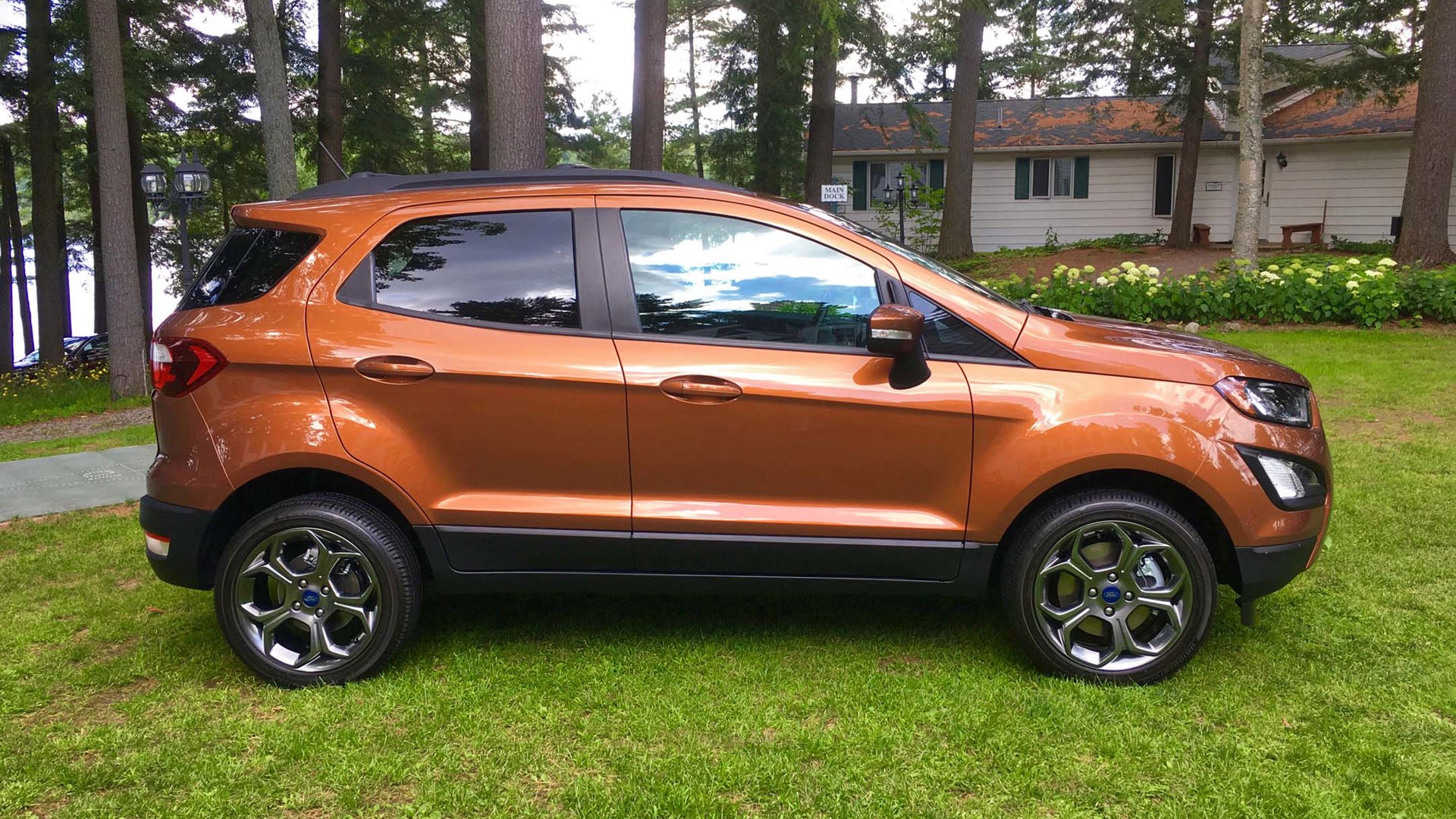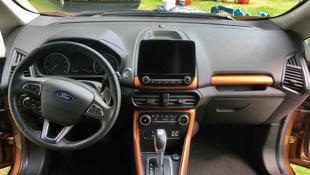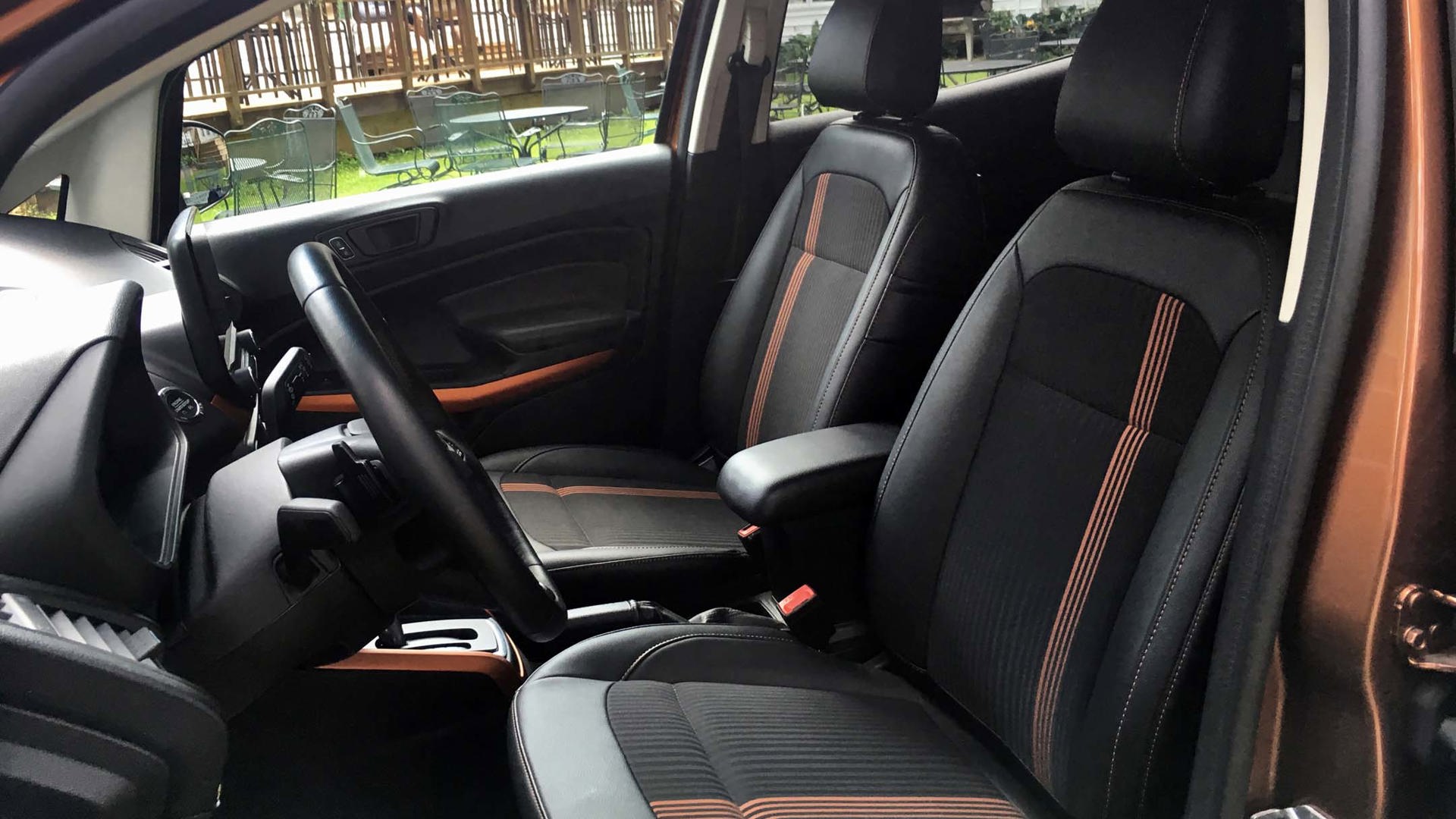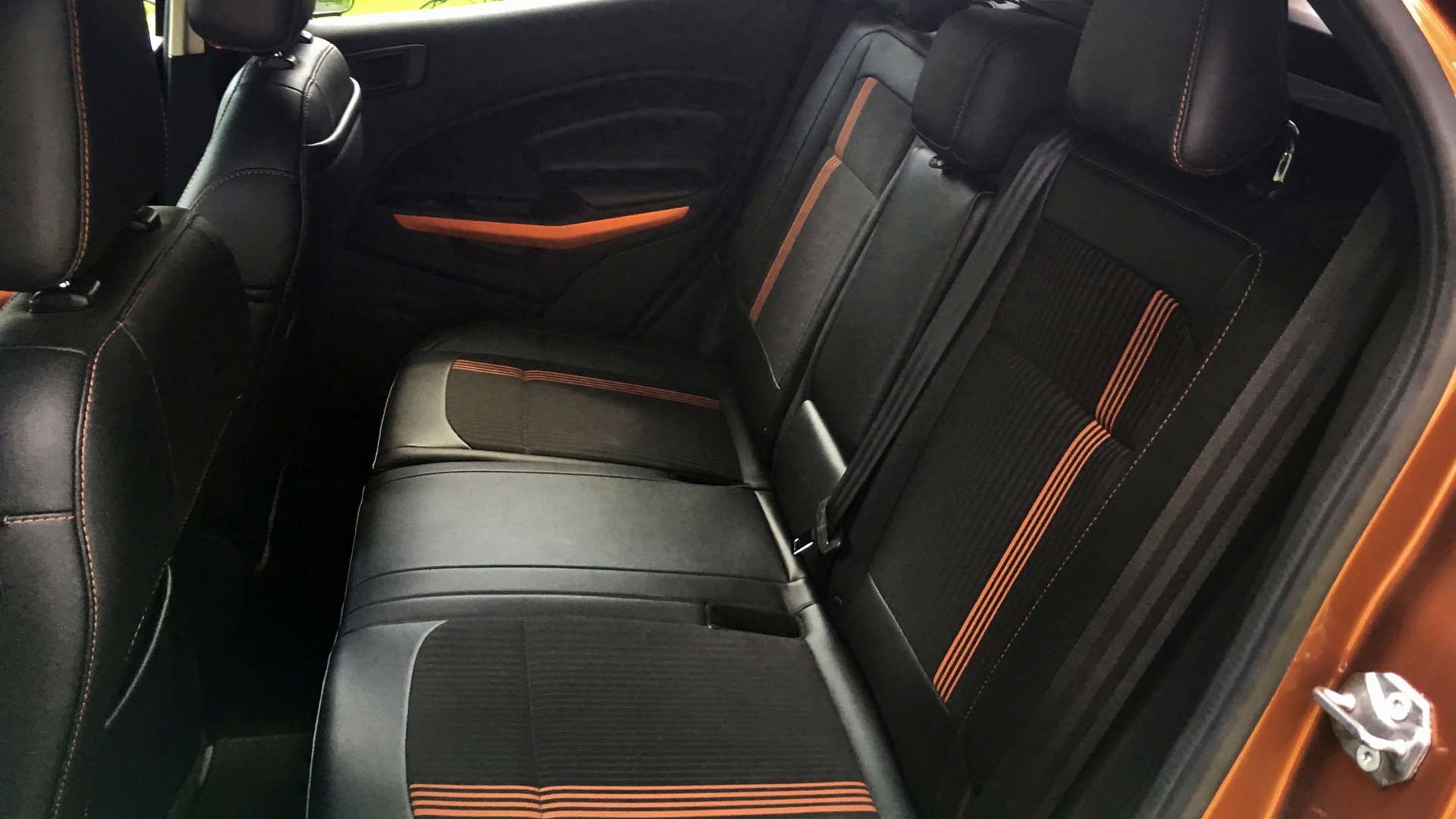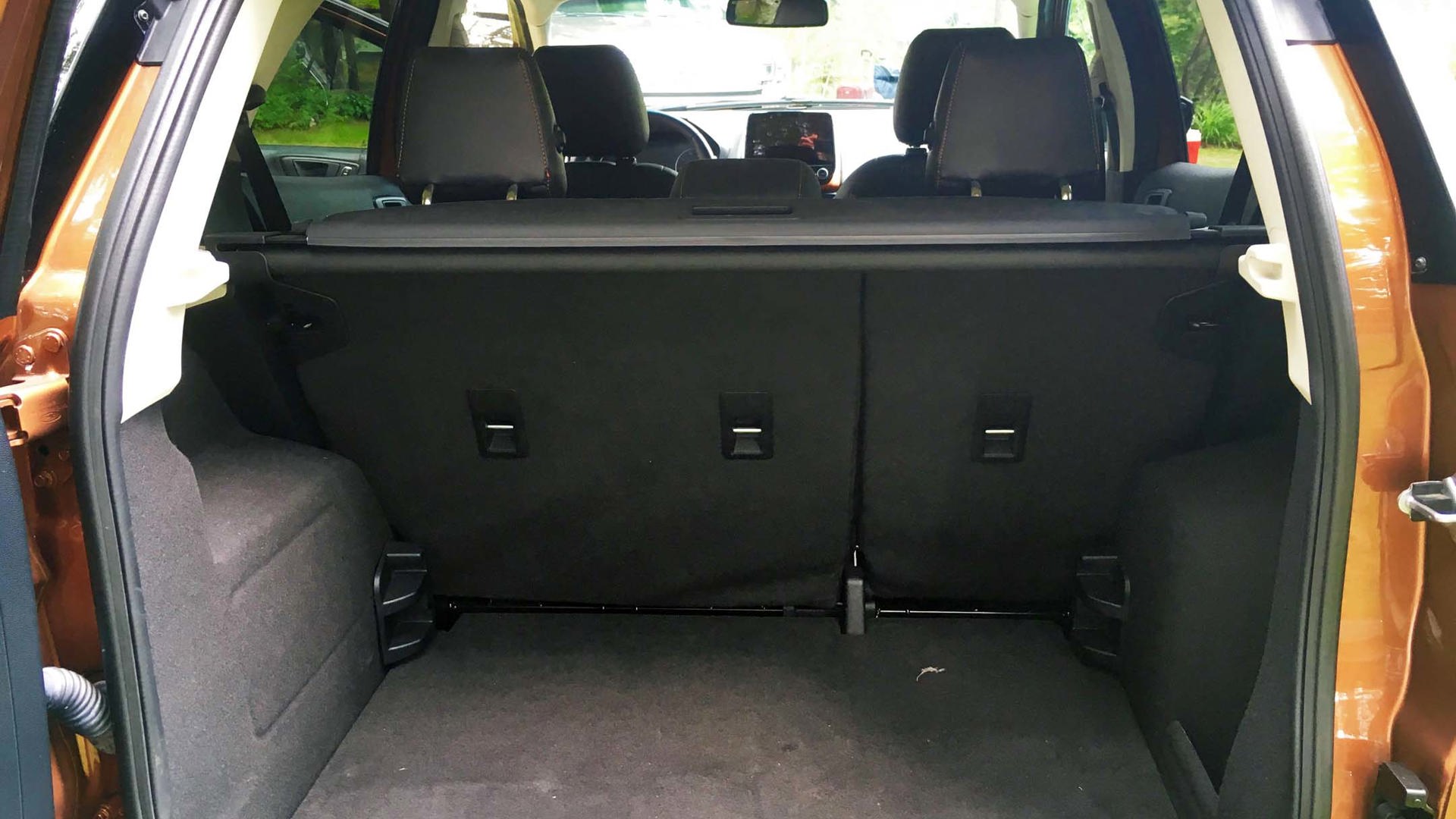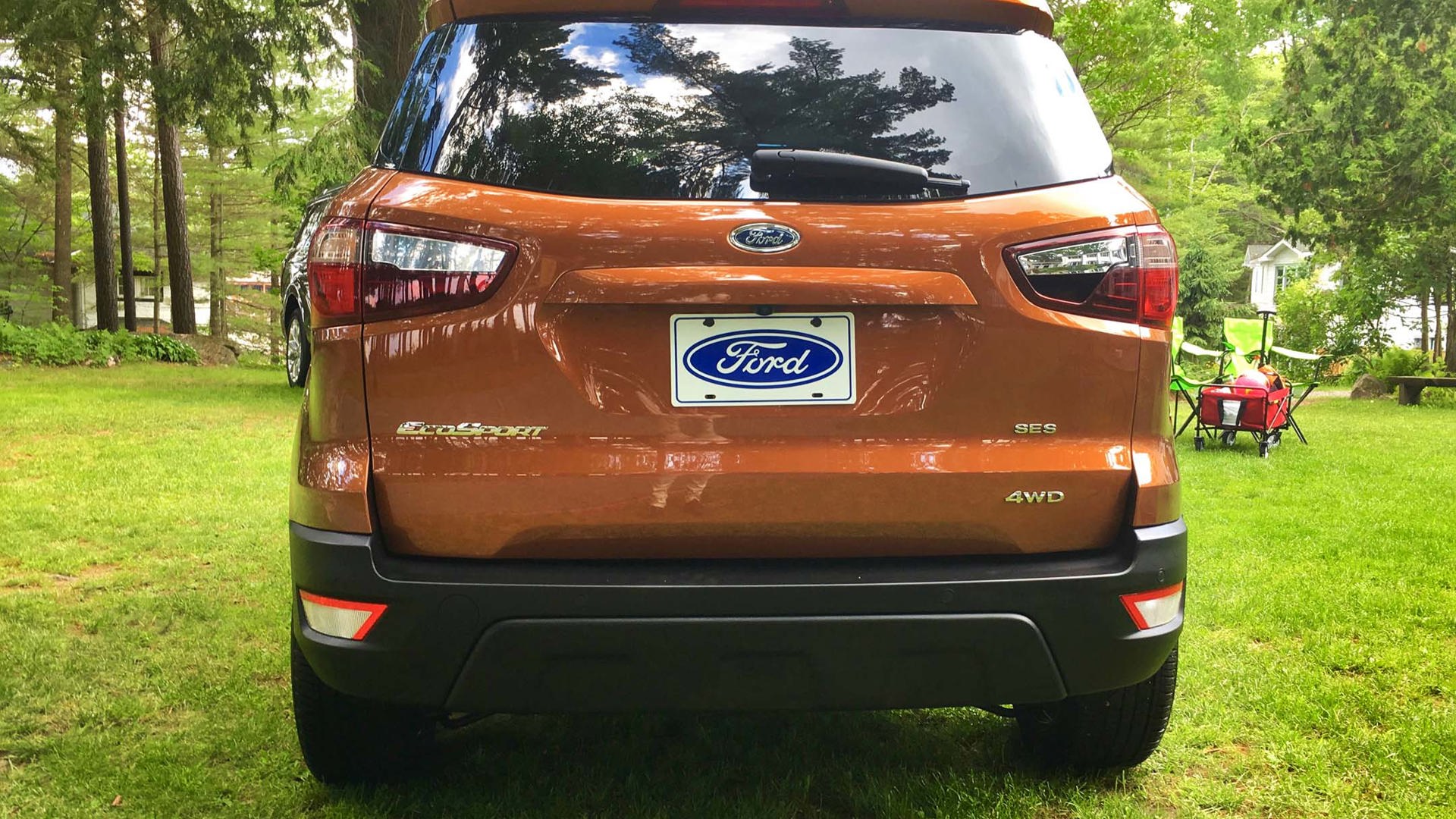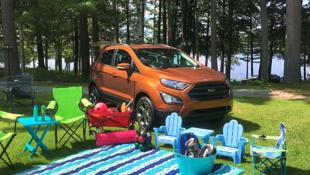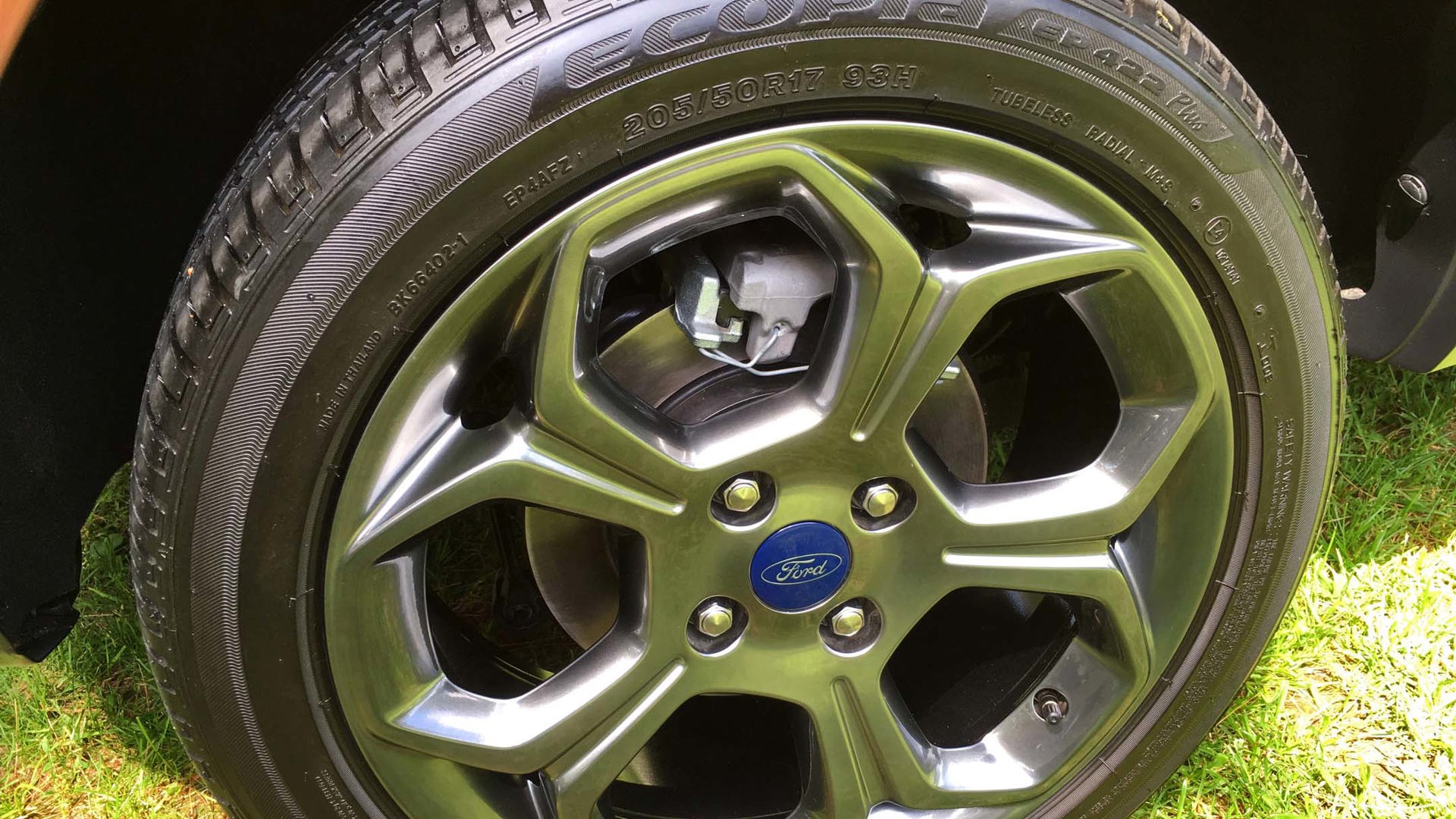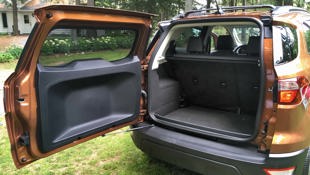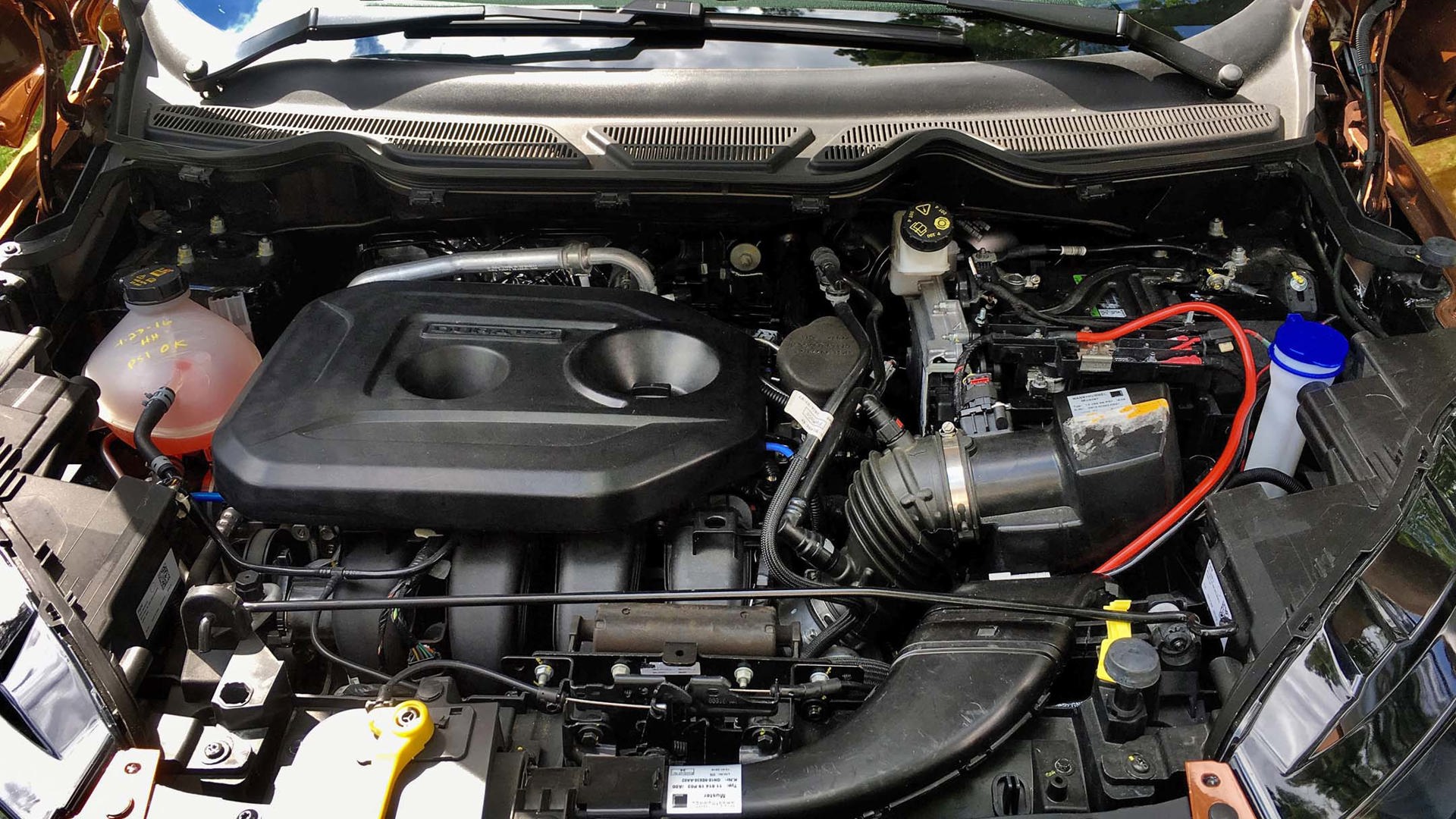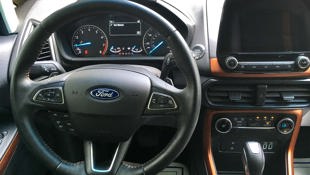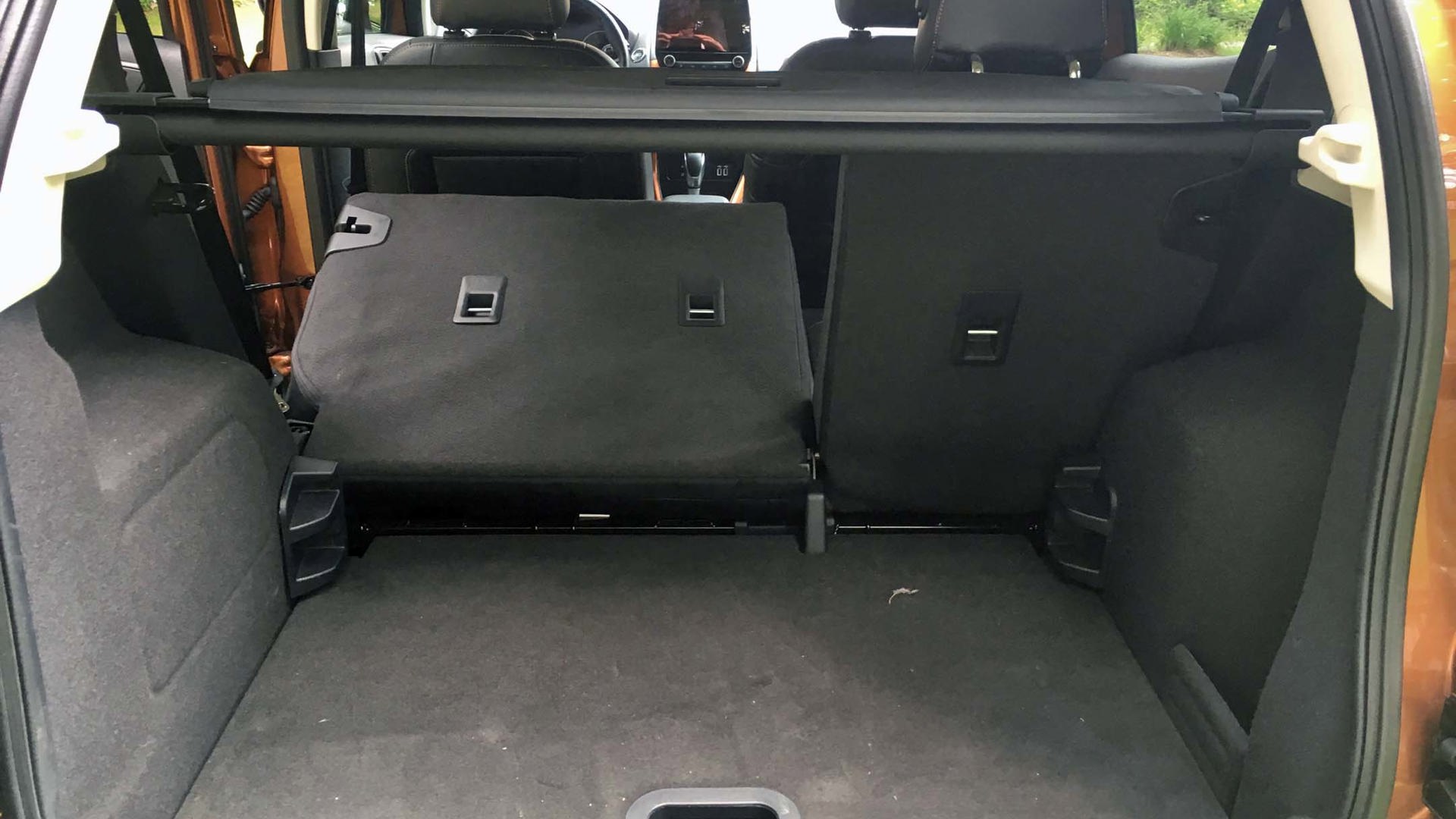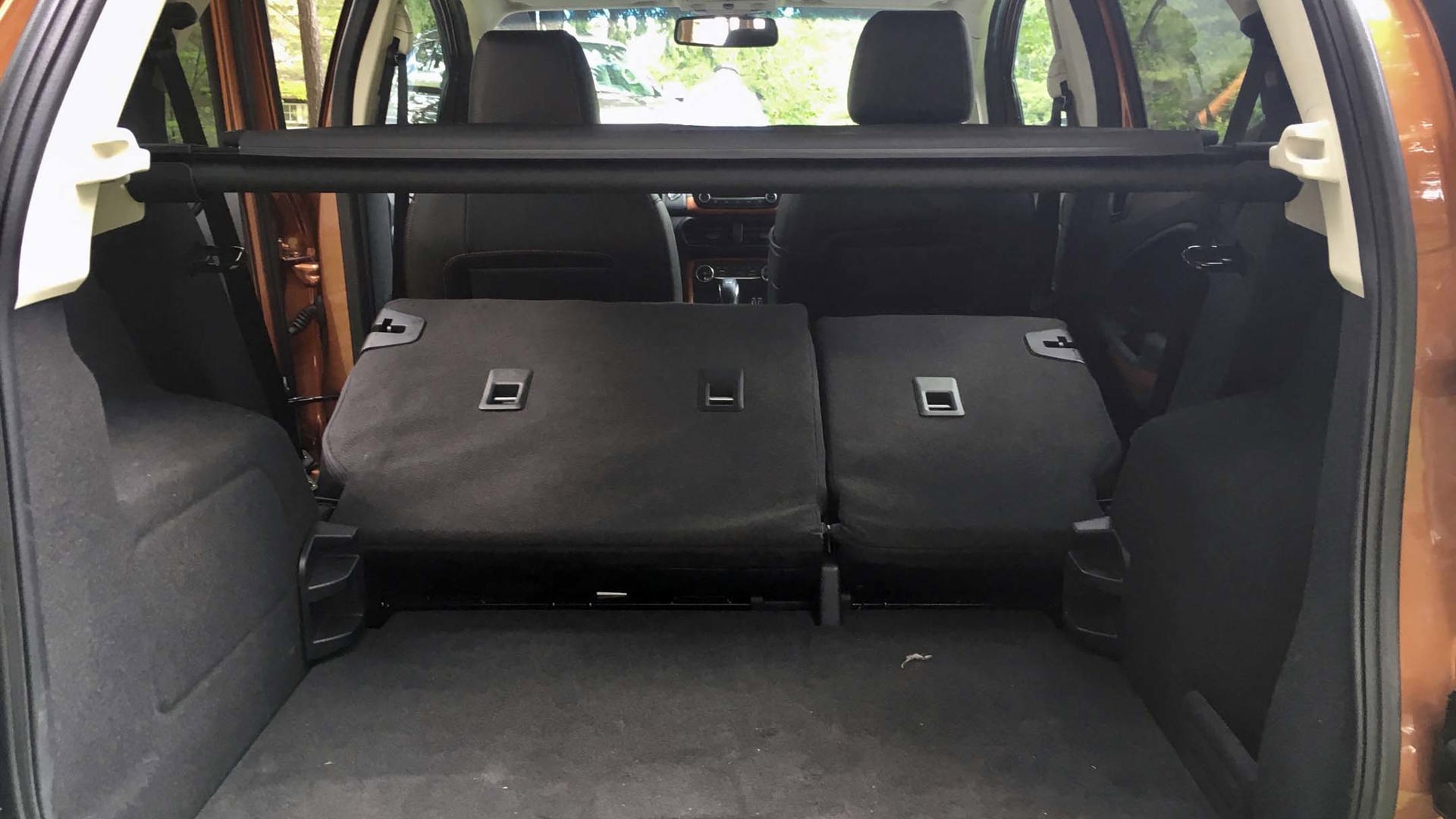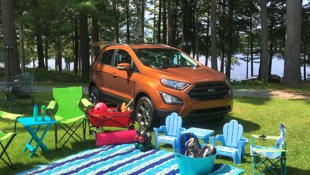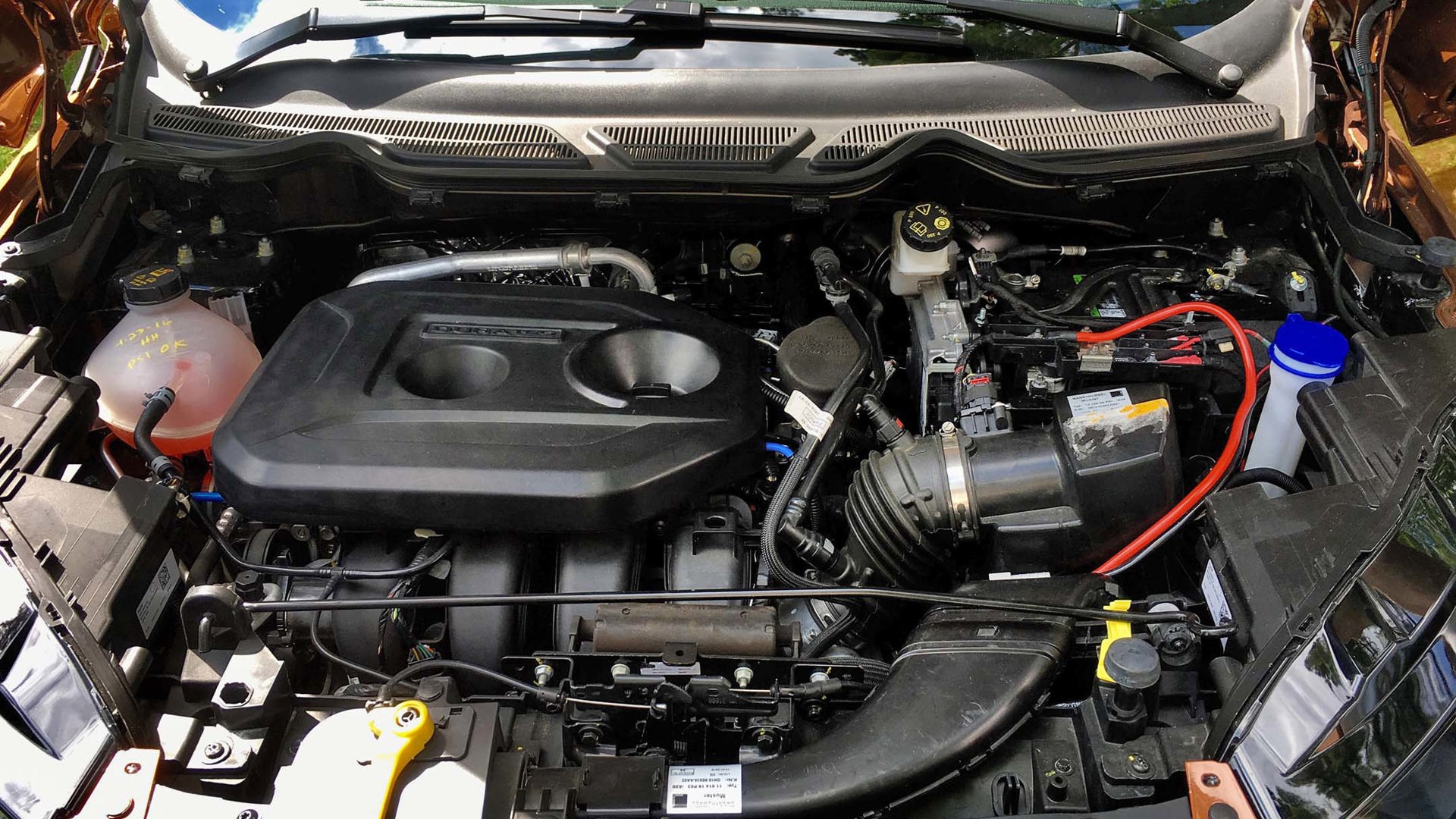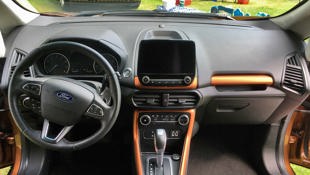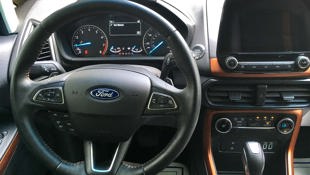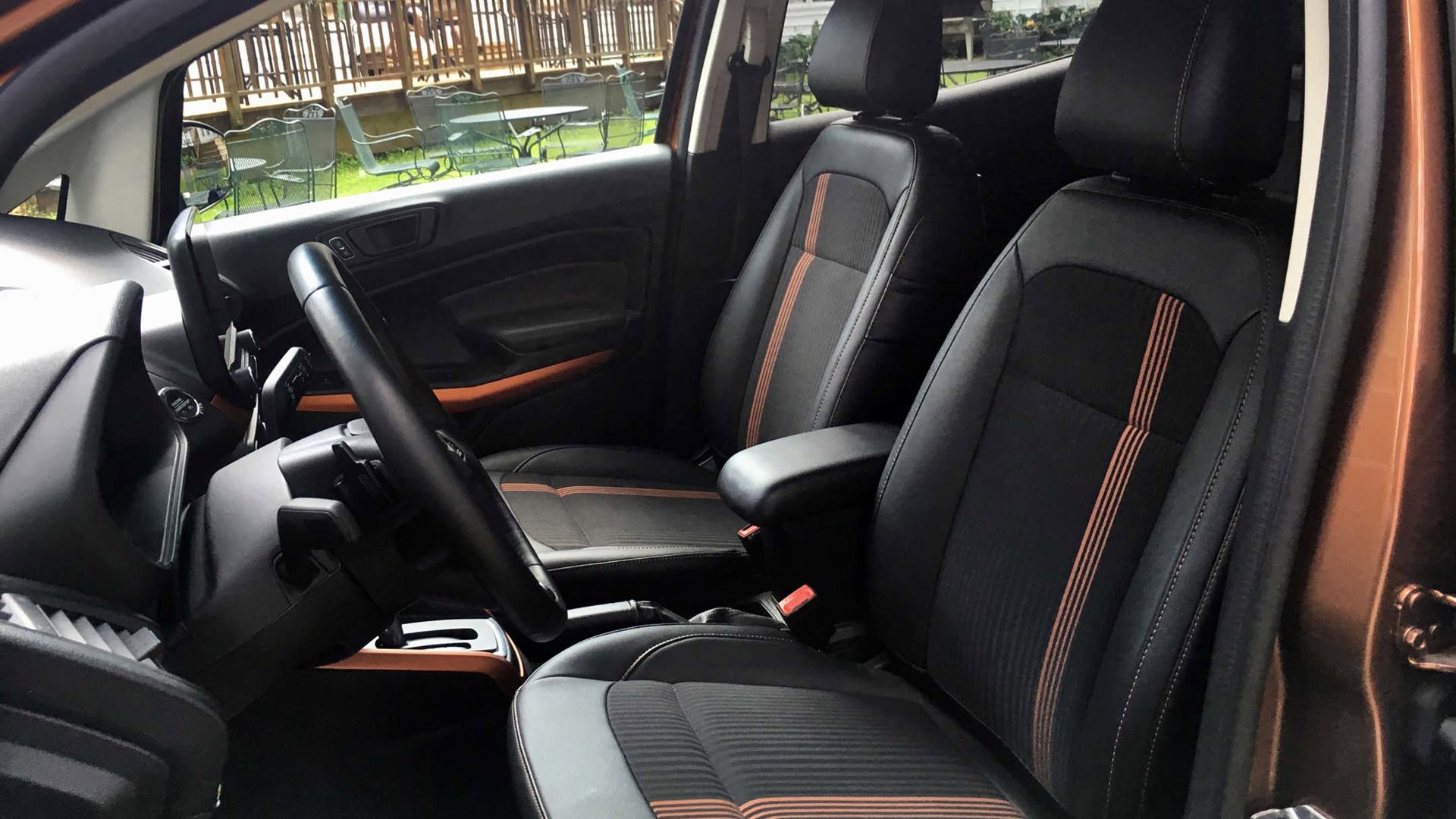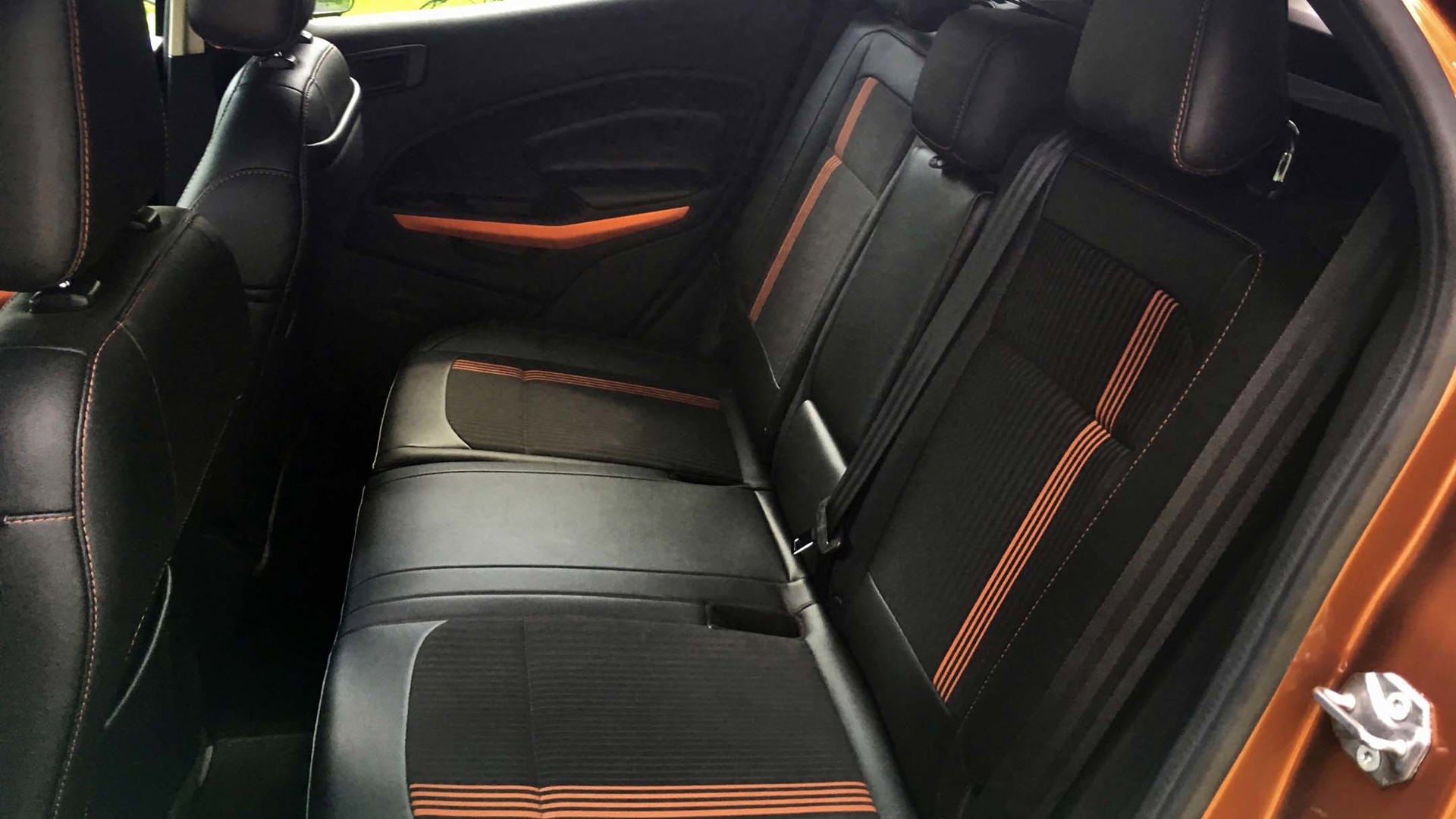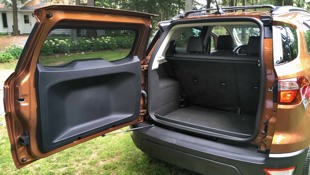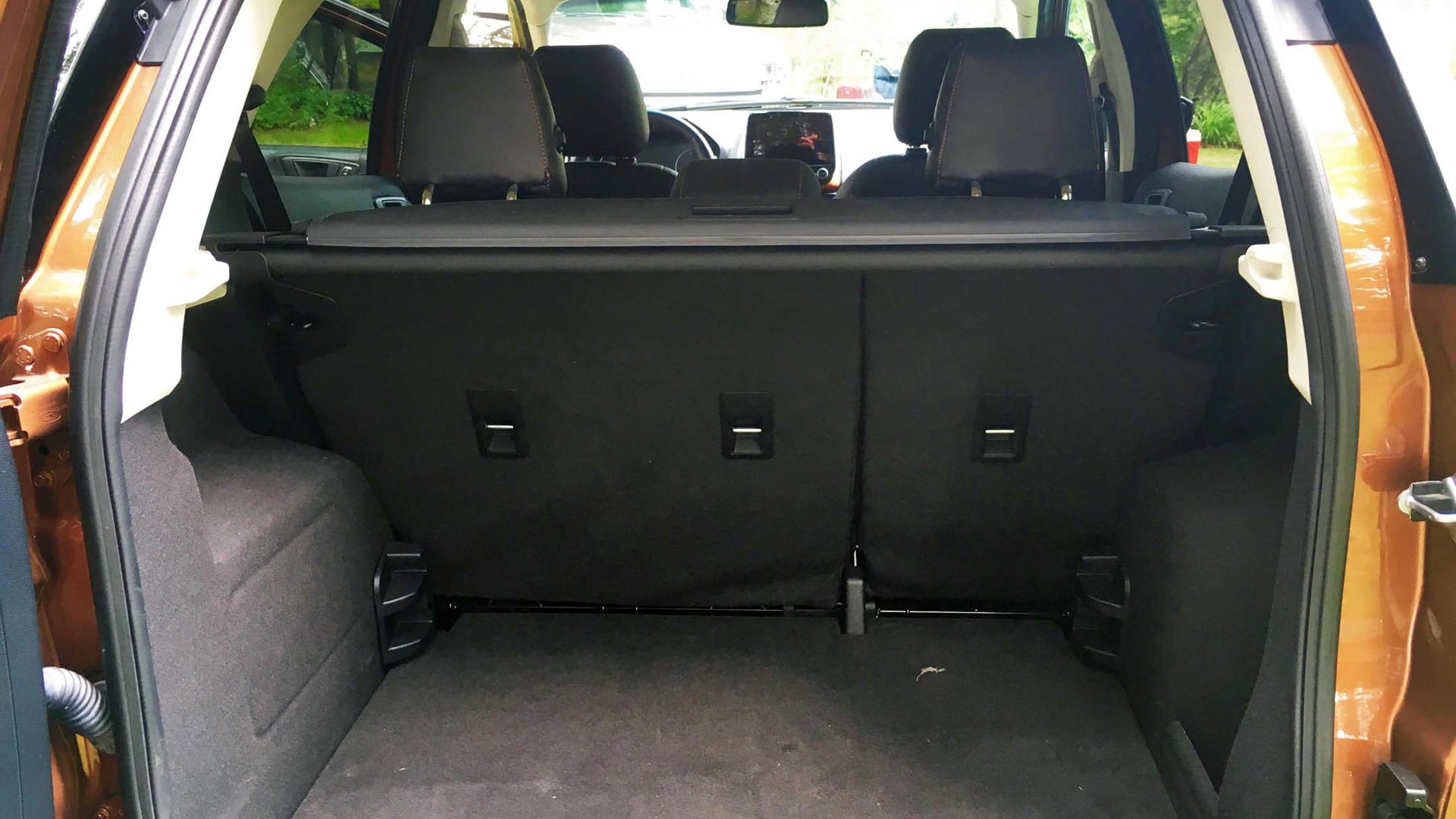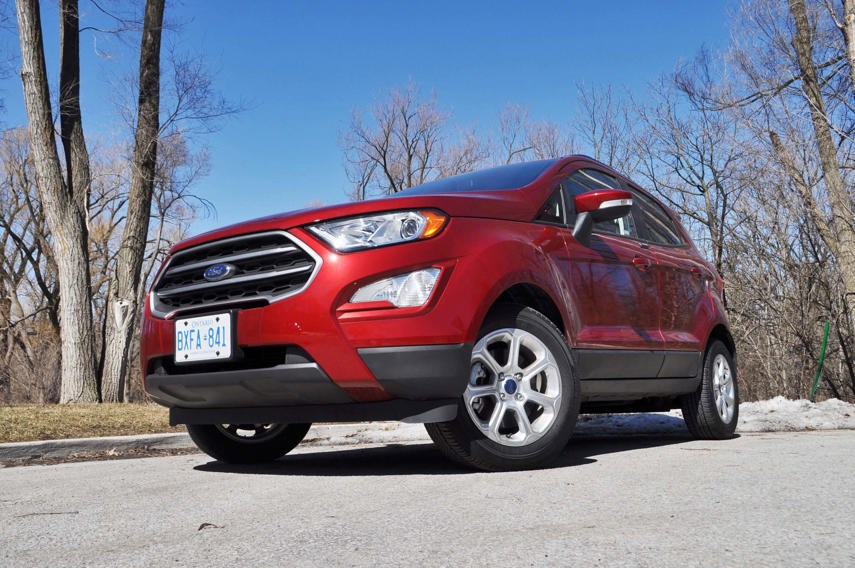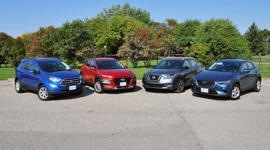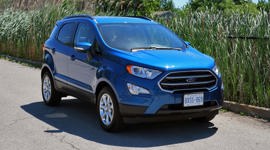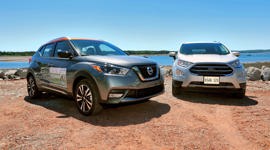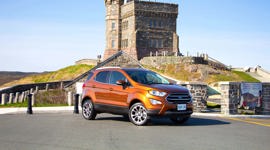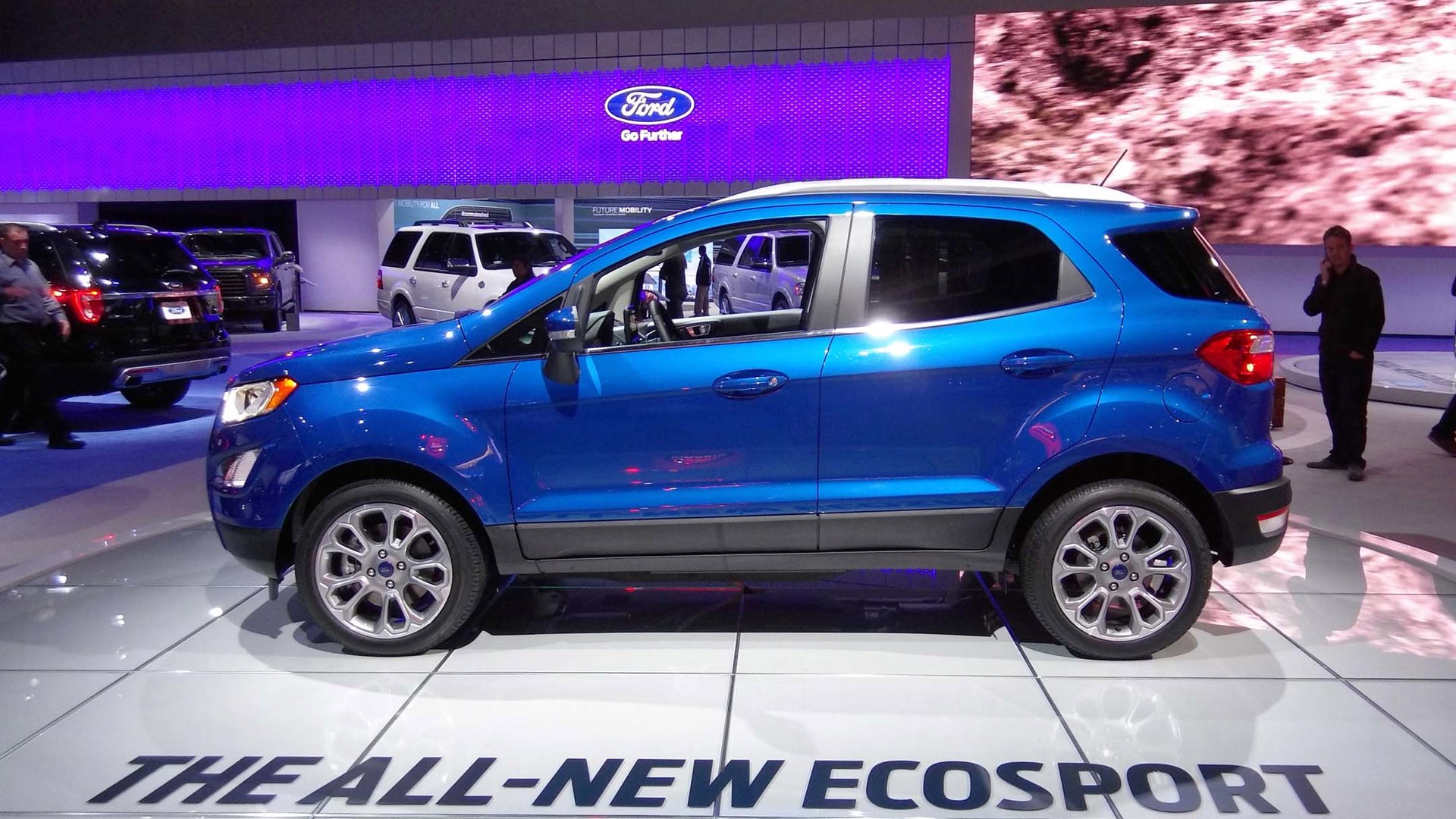The introduction of a new (sub)compact SUV has become like Donald Trump’s scandals: just when you thought you’d seen them all, there’s yet another feeding the news cycle. After years of selling on other continents, the newish Ford EcoSport (pronounced “echo” not “ee-koh”) has been tinkered with slightly and finally coming to North America. The first Canadian models should be ready this December or January 2018.
Despite the American branding, the Ford EcoSport is a world car and there isn’t a wasted cubic centimetre.
Competitors include the Mazda CX-3, Honda HR-V and Jeep Renegade but also the recently introduced Toyota C-HR, Kia Niro, Nissan Qashqai, and the Chevrolet Trax. It’s quite overwhelming.
Like those other manufacturers, Ford identified niches in the market. The prime targets, millennials, want an affordable smartphone on wheels; while the secondary buyers, retiring empty nesters, want something smallish that doesn’t require much bending to access. Both want one practical vehicle that can do it all.
So Ford’s diving in deep to this heavily crowded market with emphasis on mobility, connectivity, space, and looks.
EcoSport offers drivetrain choice, somewhat
The compactness of the EcoSport suggests good driving dynamics but we won’t know for sure until we get to drive it. It comes with roll stability control and electric power-assisted steering.
You choose from four trims. From base to best, there’s S, SE, SES, Titanium. There’s also a choice of front-wheel drive (FWD) and intelligent four-wheel drive (4WD). Canadians love 4WD as much as doughnuts but, given the impending hike in interest rates, perhaps they’re also about to love spending less money. So Ford wisely gives you a choice, and what you choose determines your EcoSport drivetrain.
Front-wheel-drive models are powered by Ford’s 1.0-litre three-cylinder EcoBoost engine; this small engine is turbocharged to enhance performance. The 4WDs feature a 2.0-litre direct-injection four-cylinder engine. Both engines are matched with a six-speed automatic transmission.
As said, it’s intelligent 4WD, an interesting decision on Ford’s part. That means the computer selects when the car goes into 4WD, not you. From regular monitoring of your speed, turn rate and accelerator position, it senses when there’s slippage and the rear wheels need power to increase grip to the road surface.
Whether they know it or not, millennials don’t usually need AWD, popping a few blocks away to their local Thursday afternoon farmer’s market for some locavore vinyl records. So it’s not like they’re sacrificing much by losing the ability to choose when to switch into 4WD. But if you’re a genuine off-road adventurer, you can probably stop reading now.
Connectivity is key
An interesting option is the “floating” infotainment screen. It’s attached to the dash at the base and, consequently, doesn’t float. (So don’t allow your off-road adventures to pass through any rivers.) These optional screens come in 6.5-inch and 8-inch upgrades, but if you select the base version, it’s 4 inches and not floating but built into the dash.
Another option is the Sync 3 infotainment system with easy-to-suss, icon-based navigation you can swipe and pinch for zooming. Sync 3 is Android Auto, Apple CarPlay compatible.
SYNC Connect is a 4G modem you purchase to convert your EcoSport into a rolling Wi-Fi hotspot, while FordPass is an app for your phone, which functions like both your fob and your control panel, allowing remote start, unlocking, locking and locating (in case you had a Dude, Where’s My Car? experience). It also remotely supplies vehicle info including mileage and how filled your tank is by percentage.
By now you’ve used up most of the power in your phone. So there’s a 110 V/150 W power outlet and two USB ports in the EcoSport.
Cargo — some distinctive standards make EcoSport stand out
Despite the American branding, the Ford EcoSport is a world car and there isn’t a wasted cubic centimetre. A Goldilocks of a car, it’s taller and longer than the Fiesta but smaller than the Escape. Space is thoroughly explored.
It seats four adults of average proportions comfortably with decent head and legroom up front and reasonable headroom in the back seats, which are split 60/40.
But, yes, watch your knees in the back. It’s a world car.
There are a lot of hiding places, cubbies and nooks. A false floor in the trunk maximizes cargo storage and allows hiding space for valuables. The back seats do not flatten completely, so be extra careful transporting drywall or windowpanes. See the photos. This factory prototype probably flattened less than the coming retail models because our Ford host struggled to get it any farther down than I could.
The rear gate swings left rather than up or the more traditional window up, door down. This standard amid a sea of extras is distinctive and looks cool but also adds an extra 1.5 feet of extra space you’d need to fully access the trunk. So if you live in the city, as many of the target buyers do, you won’t often be able to open it all the way. Plus you’ll have to drive front ways into your condo’s parking space. So what else does the swinging gate do but look cool?
Tall people won’t bang their heads on the open gate, they tell us. Okay, but most tall people learn to watch their head after that first wallop. What else? If you only have a small package, you can pop it in the trunk, opening it just slightly. Good thing, because if you’re parked on the street, as many urban drivers would be, you’ll often only be able to open it slightly.
Anyway, it really does look cool.
Other noteworthy extras
For keener drivers, there’s available wheel-mounted paddle shifters with six-speed SelectShift automatic transmission. But the EcoSport seems more designed for practicality than performance.
The available B&O (for Bang and Olufsen, not the Monopoly railroad) Play audio system is for music lovers. Acoustic experts from Harman co-designed the sound experience for Ford. B&O Play comes standard with the Titanium trim, featuring ten speakers placed throughout the EcoSport and 675-watts of power.
Another music-lover’s upgrade is SiriusXM radio. The new all-Beatles channel will mollify sad empty nesters with its blatant nostalgia and thrill big-bearded millennials with its retro honesty.
But for that swinging gate, it looks like... a compact SUV
If other previewers are using words like “nimble” and “diminutive” to describe the EcoSport, few are using “unexpected”. As with most SUVs, the EcoSport looks like committee designed a practical car. Not a problem: You’ll be inside, so it doesn’t really matter what it looks like and, as said, that limited inside space is well planned.
Besides, the EcoSport is not bad looking — just not badass like, say, its truly distinctive big Ford sister, the boxy Flex.
The EcoSport will be built in Chennia, India (if you just read “China”, it’s understandable — those two countries are so often paired in media stories about the new economy — but you’re still wrong) for export to Canada. Prices are to be made available closer to the launch, probably in January 2018. As implied above, there are enough competitors in the market to give you Stendhal syndrome these days. When the pricing does come out, go for the small print.
